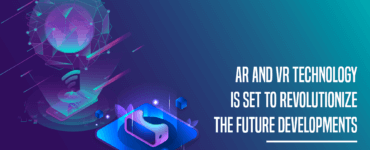Unprecedented in terms of technology convergence is the Metaverse. It has the best features the internet has to offer, a ton of digital technologies, and course, the potential of brand-new, cutting-edge technology.
While the Metaverse promises to be a place where people may interact and engage in real-world activities, it’s important to recognize the actual benefits that it has generated.
The Metaverse is more than just a place to have fun and escape reality. Yes, you can attend live shows, engage in gaming, and enjoy a variety of other activities here. However, you might also get to go to schools, work in offices, or even shop in virtual malls.
It has significant ramifications for a wide range of industries, particularly in light of how virtual reality in the retail sector connects to the advantages that Web 3.0 has to offer.
Benefits And Drawbacks Of A Virtual Shopping Mall
By 2030, it is anticipated that the Metaverse market will be worth $280 billion. Deploying a retail experience in the Metaverse is more difficult than it first appears. It’s important to import your stores’ brick-and-mortar experience as well as the aesthetics of your brand and company.
You can get assistance from a Metaverse development company to guide you through the essential processes, but promoting products in a virtual mall necessitates departing from the conventional strategy.
The Benefits Of Metaverse Virtual Shopping Mall
The following are some benefits of shopping virtually at the Metaverse Mall:
Shopping Experience
Your consumers will be given an unforgettable shopping experience thanks to the virtual environments offered by the Metaverse.
After all, it is a place where customers will be able to browse and explore things while they are in a 3D environment and be able to experience the products as their digital avatars.
Even more remote experiences may become possible, facilitating activities like shopping for those with disabilities.
Individualization
The Metaverse’s features will enable a level of unheard-of personalization for virtual malls, which is another ace up its deck.
You will effectively be able to control the shopping experience that your customers enjoy in your businesses since products will be recommended to them based on their tastes and actions.
Modern Technologies
Your virtual shopping experience will be made possible by the newest technologies, including VR and AR, blockchain, AI-powered systems and applications, etc., depending on the stage or level of Metaverse deployment.
This will support how you design your virtual showroom and the features it will provide to both current and potential customers.
The Drawbacks Of Online Shopping Malls
The following are the drawbacks of shopping virtually in the Metaverse Mall:
Tech Inequalities
A new experience like virtual malls in a Metaverse may make shopping less enjoyable for people who are not used to it, as is the case with many other cutting-edge digital technologies.
You will have to devote more time to developing optimized versions or excluding specific demographics. Because not everyone will have access to the technology needed to provide the Metaverse experience on their end.
Product Credibility
Although the Metaverse’s virtual mall model provides immersive experiences. It is nevertheless rife with problems that undermine consumer confidence in the goods.
Customers won’t be able to inspect the goods they want to buy as they normally can because they aren’t substantial. This absence of tactile and visual appraisal by holding something in your hand could influence purchasing decisions.
Privacy And Security
The discussion of online experiences has always included worries about one’s security and privacy. You must make sure that a Metaverse for Business organization with experience in these areas creates your virtual mall.
so that they can appropriately resolve problems that could affect transactional difficulties, cybersecurity, or privacy.
Curve Of Learning
The learning curve that will determine a customer’s access to your Metaverse mall will add to the natural divide in digital technology. They would have to understand the techniques and best practices for navigating your virtual settings and storefronts.
The purchasing experiences of others, particularly older generations, may suffer as a result until the learning curve can be successfully flattened.
These are essentially some of the most obvious benefits and drawbacks that you would be prepared to experience if you decided to open a virtual mall in the Metaverse. There are a ton of fascinating options for you and your consumers to enjoy as well as space for new ideas that you’d find.
The disadvantages, such as the ones described above, must also be taken into account. Hopefully taken into account as you decide on your online mall development so that everyone has a fair, secure, and inclusive experience.
Also Check: Virtual Reality: How VR Is Reforming Healthcare
Top Features And Examples Of Metaverse Virtual Stores
In the Metaverse, virtual malls mix economic theories, social interactions, creative design, and technology. This fusion results in some unique and engaging shopping experiences that go beyond the confines of conventional brick-and-mortar businesses and online marketplaces.
In these virtual malls, users can explore visually appealing settings, interact with goods using cutting-edge capabilities, and engage with other users. In a digital environment that enhances their buying experience. Let’s look at some prominent characteristics and illustrations:
The Technological Foundation
Virtual malls and shops built through the development of virtual reality will have a solid technological base. As a result, it will have access to servers and high-speed computers. And the most recent design and graphics for immersive experiences.
It will finally ensure that users may engage and take part in activities in the virtual mall without any delays.
On the Roblox platform, Nike, for instance, unveiled NIKELAND, an interactive universe. It made use of the platform’s technological prowess and advantages to provide an area where users can play games using avatars.
Customers were also able to customize their avatars with Nike clothing and accessories through their store experience.
The Artistic Visuality
The designers of a store or a retail brand will be able to ensure that the virtual surroundings. Their create are consistent with the theme and aesthetics of their brand by working closely with the Metaverse developers. It might either produce new artistic forms or exact reproductions, like digital twins for an online business.
Gucci, a high-end company in the fashion sector, made use of this quality when it developed the “Gucci Garden Experience” for its name. To offer a venue that is ideal for presenting their history and collections, they collaborated with the Roblox platform.
They also sold their clients tokenized versions of their products as “NFTs,” enhancing their retail experience.
Virtual Events
One of the most impressive aspects of the Metaverse is that businesses can offer virtual events on top of their retail experiences for potential customers. This functionality will also apply to the virtual malls on these platforms.
These are essential for a brand to maintain audience engagement in the Metaverse and might include live broadcasts, concerts, product launches, etc.
The well-known fast food restaurant Wendy’s worked with Fortnite and Epic’s Metaverse to spread awareness of their brand’s promises. They expressed their worries to their followers and clients regarding the value of using fresh components rather than frozen ones in the food sector.
Additionally, they broadcast their gameplay and virtual events in the Fortnite metaverse live to over 250,000 Twitch spectators.
Transform Your Brand’s Identity With The Metaverse Technology
Over 2 billion individuals are said to be shopping online at this time for the goods they need at home. To be precise, 2.64 billion. That amounts to nearly half of the people who regularly use the internet and around 33% of the entire world’s population.
The Metaverse has the potential to become a disruptive force in the retail sector. And it is currently mostly constrained to conventional retail and commerce pathways.
It’s crucial to keep in mind that converting the possibilities of Metaverse shopping and virtual storefronts into reality demands knowledge and vision as you do today.





 United States
United States United Kingdom
United Kingdom India
India Canada
Canada Singapore
Singapore



































